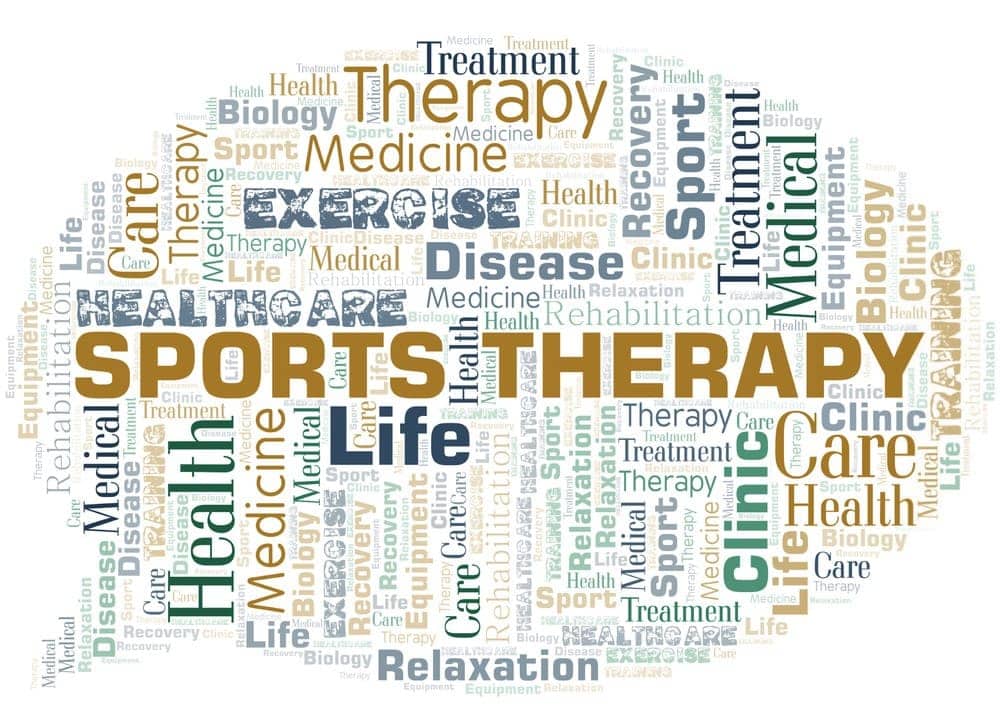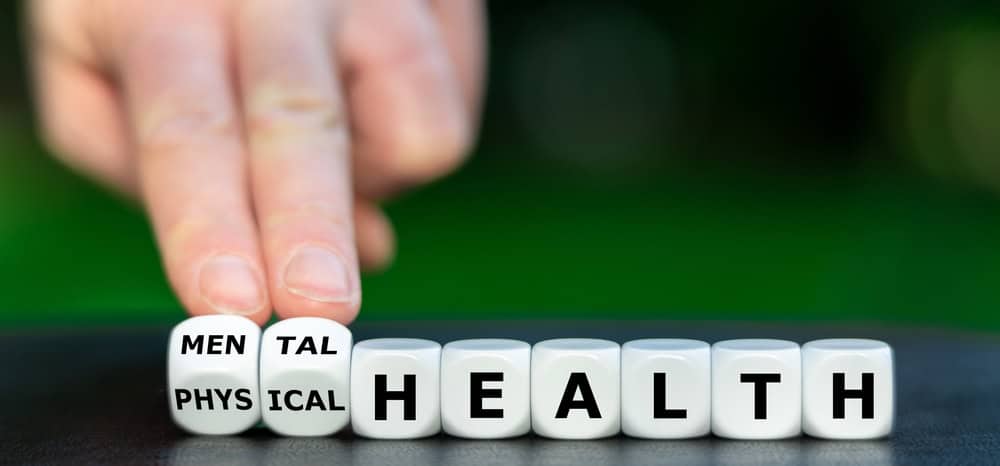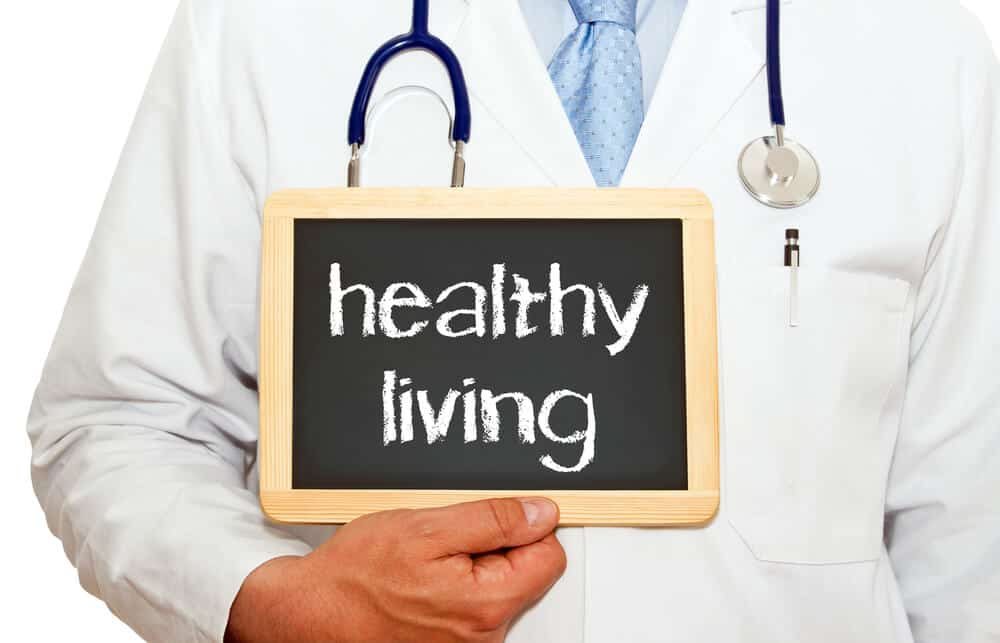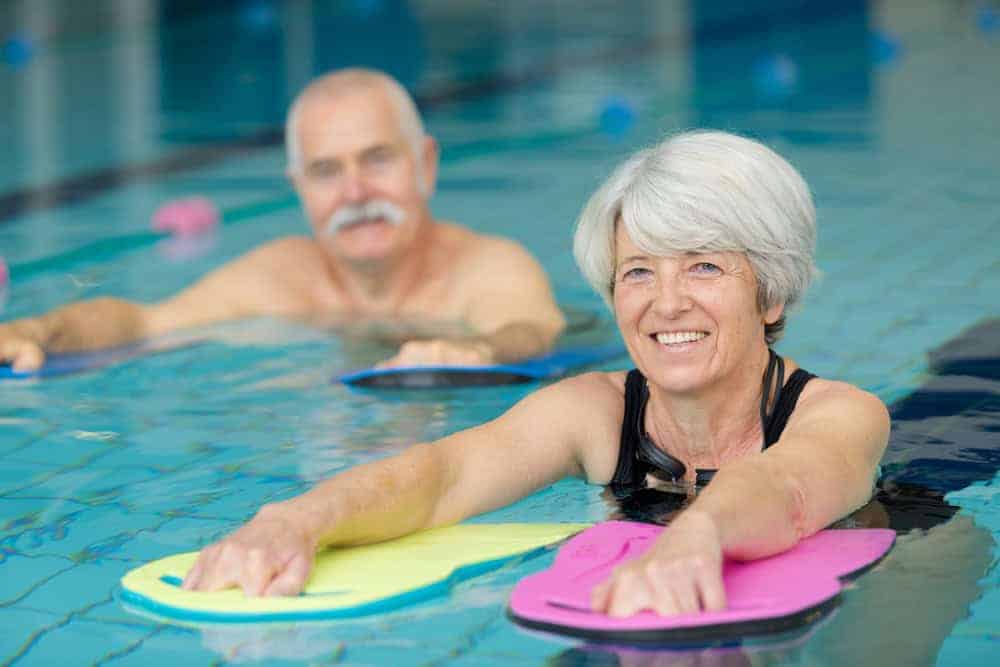
When we think about healthcare for seniors, we might not think of sports therapists. They usually work with athletes and help them stay fit. However, more and more, sports therapists are helping older adults too.
So, what can a sports therapist do for seniors? Can they really help make life better for older adults? In this article, we will look at how sports therapists are starting to play a role in senior care. Join us to learn about the important role sports therapists can play in making the golden years healthier and happier.
Understanding Sports Therapy: A Holistic Approach to Healing
Sports therapy is often associated with athletes and fitness enthusiasts. However, its principles and practices can benefit people of all ages. The holistic approach of sports therapy focuses on a person’s overall well-being, promoting healing and functional independence.
What is Sports Therapy?
Sports therapy is a branch of healthcare that focuses on preventing injuries and rehabilitating patients back to optimal fitness. It combines principles from exercise science, physical therapy, and sports medicine. Sports therapists are trained to assess, treat, and prevent various musculoskeletal injuries.
Sports therapy uses various techniques such as manual therapy, exercise prescription, and functional training. The aim is to restore strength, flexibility, and range of motion. It also involves education on injury prevention and promoting long-term physical health.
Common Applications in Sports and Fitness
In sports and fitness, sports therapy is an essential component. Athletes rely on sports therapists to recover from injuries quickly and efficiently. Its common applications include:
- Injury Rehabilitation: Helps athletes recover from injuries such as sprains, strains, and fractures.
- Performance Enhancement: Design exercise programs to improve strength, endurance, and agility.
- Injury Prevention: Educate on proper techniques and provide conditioning programs to avoid injuries.
- Pain Management: Use techniques like massage, stretching, and strengthening exercises to manage and alleviate pain.
Sports therapists work closely with coaches and other healthcare professionals. They ensure athletes are physically prepared for competition and maintain peak performance levels.
How is Sports Therapy Different from Traditional Physical Therapy?
While both sports therapy and traditional physical therapy aim to improve patient health, they have some clear differences:
- Target Population: Traditional physical therapy caters to a broad range of patients, including those with chronic illnesses, post-surgical recovery needs, and mobility issues. Sports therapy primarily focuses on athletes and active individuals but is adaptable for seniors aiming to maintain an active lifestyle.
- Approach: Sports therapy uses a more dynamic, active approach with an emphasis on functional movement and performance enhancement. Traditional physical therapy may employ a more passive approach, focusing on basic mobility and daily living activities.
- Techniques: Sports therapy often includes advanced techniques such as plyometrics, sports-specific drills, and high-intensity interval training. Traditional physical therapy tends to use more standard rehabilitation exercises and modalities like heat, ice, and ultrasound.
- Goals: The primary goal of sports therapy is to return individuals to their peak performance level. Traditional physical therapy aims to restore the patient to their pre-injury or pre-illness level of functioning, often with a focus on achieving basic functional independence.
The Path to Becoming a Sports Therapist: Education and Career Outlook

Sports therapists play a crucial role in the well-being of athletes and active people as well. They use their expertise to prevent injuries, promote recovery, and enhance performance.
Let’s explore the journey to becoming a sports therapist and the exciting career prospects that await in this field.
What Does The Role Of A Sports Therapist Entail?
A sports therapist is a specialized healthcare professional who focuses on preventing, diagnosing, and treating sports-related injuries. Their primary goal is to help athletes and active individuals achieve optimal performance while minimizing injury risks.
Their key responsibilities include:
- Conducting assessments and evaluations to identify injury risks.
- Developing and implementing tailored treatment plans.
- Using manual therapy techniques to alleviate pain and promote healing.
- Designing and supervising rehabilitation programs for injured athletes.
- Providing advice on injury prevention and performance enhancement.
- Collaborating with other healthcare professionals for comprehensive care.
Sports therapists work in various settings including sports teams, clinics, fitness centers, and private practices. Their work is essential in ensuring that athletes remain healthy and perform at their best.
How Long Does It Take To Become A Sports Therapist?
Becoming a sports therapist in the United States requires a strong educational foundation. It typically starts with earning a bachelor’s degree in kinesiology, exercise science, or a related field. This degree provides essential knowledge in anatomy, physiology, biomechanics, and exercise science.
Important milestones in their educational journey include:
- Bachelor’s Degree (4 years)
Students study core subjects including human anatomy, physiology, sports injuries, athletic training, and rehabilitation techniques. They gain practical experience through internships and clinical placements.
- Gain Experience:
Get relevant work experience through internships, clinical rotations, or entry-level positions. Hands-on experience is necessary for practical skills and networking.
- Professional Certification
Obtain licensure by passing the National Physical Therapy Examination (NPTE) after earning a Doctor of Physical Therapy (DPT) degree from a Commission on Accreditation in Physical Therapy Education (CAPTE) accredited program. Sit for Sports specialized exam conducted by the American Board of Physical Therapy Specialties (ABPTS).
- Continuing Education
Sports therapists must engage in lifelong learning. This includes attending workshops, seminars, and advanced courses. It ensures they stay updated with the latest advancements in the field and maintain their certification.
- Advanced Education
Some may pursue further specialization through master’s programs or additional certifications. It may include a Master of Science in Athletic Training or specific manual therapy or strength and conditioning certifications. This advanced training can enhance career prospects and expertise in specific areas of sports therapy.
Career Prospects and Growth Opportunities
The field of sports therapy in the USA offers diverse career opportunities, driven by the growing emphasis on health and fitness.
Employment Settings
Sports therapists can work with professional sports teams, providing therapy and rehabilitation to athletes. Rehabilitation centers and fitness clubs are common workplaces, where therapists help patients recover from injuries and assist clients with exercise programs. Some choose to run private clinics or offer freelance services. Opportunities also exist in educational institutions, supporting student-athletes, and in corporate wellness programs, promoting employee health and fitness.
Professional Organizations
Joining professional organizations such as the National Athletic Trainers’ Association (NATA), the American Physical Therapy Association (APTA), or the American Massage Therapy Association (AMTA) provides access to valuable resources. These include continuing education, networking opportunities, and avenues for professional development, helping therapists stay current with the latest techniques and research.
Specialization Areas
Therapists can specialize in areas like pediatric sports therapy, geriatric rehabilitation, injury prevention, orthopedic sports therapy, and cardiopulmonary rehabilitation. Specialization enhances expertise and can lead to higher earning potential and more targeted career opportunities.
How is Sports Therapy Practical in Elderly Care?

Sports therapy, traditionally linked with athletes, has profound benefits in senior care as well. This section highlights the practical applications of sports therapy in elderly care, discussing its multifaceted benefits.
Physical Health Improvements
Sports therapy provides numerous physical health benefits for seniors. It helps them maintain and improve their physical capabilities through targeted interventions and techniques.
Strength and Mobility
With aging, joint stiffness and muscle tightness can hinder movement. Sports therapy includes a variety of stretching exercises and mobility drills that keep joints flexible and muscles elastic. Improved flexibility reduces the risk of falls and injuries by enhancing the body’s ability to adapt to sudden changes in movement or balance.
Techniques like proprioceptive neuromuscular facilitation (PNF) stretching or dynamic stretching are often used. These exercises improve the range of motion, making daily activities such as climbing stairs or dressing easier.
Injury Prevention and Recovery
Muscle mass and bone density also decrease with age, causing weakness and frailty. Sports therapy uses resistance training to counteract these effects. Techniques like progressive resistance exercises help build muscle strength. This reduces the likelihood of fractures; it enhances stability and allows seniors to move confidently.
Sports therapists design rehabilitation programs tailored to individual needs and recovery goals. Hence, it ensures a quicker, safer recovery and minimizes the risk of re-injury. Post-surgical recovery protocols, for example, are customized to restore function, improve mobility, and progressively rebuild strength.
Chronic Pain Management
Chronic pain severely impacts seniors’ quality of life. Sports therapists use a combination of manual therapy, soft tissue massage, and specific exercises designed to reduce inflammation and increase strength around affected areas.
Techniques such as myofascial release or trigger point therapy can alleviate pain by targeting tight muscles and fascia. Pain management through sports therapy helps seniors participate in activities they enjoy without discomfort.
Cardiovascular Health
Cardiovascular diseases are common in older adults. Sports therapy promotes heart health through aerobic exercises tailored to seniors’ tolerance levels. Activities like brisk walking, cycling on stationary bikes, or aquatic exercises, such as water aerobics, increase heart rate safely.
Such exercises improve blood circulation, lower blood pressure, and enhance overall cardiovascular function. Sports therapists monitor heart rate and exertion levels to ensure that exercises are performed safely and effectively, reducing the risk of cardiovascular events.
Balance and Coordination
Falls are a major concern for the elderly, often leading to serious injuries. Sports therapy addresses balance and coordination through targeted exercises. Balance training, such as standing on one leg, using balance boards, or practicing Tai Chi, improves stability.
Enhanced coordination helps seniors navigate their environment safely, reducing the risk of falls and associated injuries. Vestibular training, which targets the inner ear and balance systems, is also used to improve overall stability and prevent dizziness.
Mental Health and Well-being

The mental health of seniors is also significantly enhanced through sports therapy. It offers numerous cognitive and emotional benefits through structured and engaging activities.
Cognitive Benefits
Physical activity has a positive impact on mental acuity and memory. Regular exercise stimulates brain function. It helps to maintain cognitive abilities and delay the onset of cognitive decline.
Activities that combine physical and mental challenges, such as dance or yoga, engage different parts of the brain simultaneously. This dual engagement enhances neuroplasticity, the brain’s ability to adapt and form new neural connections, which is crucial for maintaining cognitive health in seniors.
Emotional Well-being
Physical activity is closely linked to mental well-being. Sports therapy offers psychological benefits by reducing symptoms of depression and anxiety. Exercise releases endorphins, which elevate mood and promote a sense of well-being.
Sports therapists often integrate activities that are enjoyable and socially engaging, such as group fitness classes or team sports, to further enhance emotional well-being. These activities provide a sense of achievement and improve overall mood.
Stress Reduction
Sports therapy includes relaxation techniques and mindfulness practices that help reduce stress. Engagement in physical activities can provide a sense of accomplishment and calm and lower overall stress levels.
Techniques such as progressive muscle relaxation, guided imagery, or mindfulness meditation are often used in sports therapy sessions to help seniors manage stress.
Sleep Quality
Regular exercise has been shown to improve sleep patterns and reduce insomnia. Aerobic exercises and strength training are particularly effective in enhancing sleep.
Sports therapists also educate seniors on proper sleep hygiene practices, such as maintaining a consistent sleep schedule and creating a relaxing bedtime routine, to further improve sleep quality.
Social Interaction and Engagement

Engaging in sports therapy offers seniors numerous opportunities for social interaction and engagement. It fosters a sense of community and belonging through various structured and supportive activities.
Group Activities
Sports therapy often involves group exercises that encourage social connections among participants. These activities create a sense of community and reduce feelings of loneliness and isolation.
Group activities such as chair yoga, water aerobics, or walking clubs encourage social interaction and mutual support. Shared goals and collective participation in these activities promote teamwork and build lasting friendships among senior participants.
Individualized Care Plans
Tailoring therapy to meet individual needs and preferences ensures that each senior receives the appropriate care. Personalized plans maximize the effectiveness of the therapy and address specific health concerns.
Sports therapists conduct thorough assessments to understand each individual’s physical capabilities, medical history, and personal goals. Customized exercise programs are then developed, focusing on the unique needs of each senior, ensuring optimal outcomes.
Community Involvement
Participation in community events and activities helps seniors stay engaged and active. Sports therapy can be integrated into local programs as it promotes wider social interaction and engagement.
Community-based programs such as senior fitness classes, walking groups, or volunteer opportunities provide platforms for seniors to remain active and involved. These programs enhance social integration and contribute to a sense of purpose and belonging.
Support Networks
Building relationships and support systems through shared experiences in sports therapy sessions can provide emotional and psychological benefits. These networks offer encouragement and companionship, enhancing overall well-being.
Support groups or buddy systems, where seniors partner up for exercises or activities, provide additional motivation and accountability. The sense of shared experience and mutual support helps seniors cope with challenges and fosters a positive outlook.
Enhanced Quality of Life

Sports therapy enhances the overall quality of life for seniors in many ways:
Independence
A key goal of sports therapy is promoting self-sufficiency and confidence in seniors during daily activities. Seniors can maintain their independence longer by improving their physical health.
Exercises that focus on functional movements, such as squats, lunges, or lifting objects, help seniors perform daily tasks with ease. Improved strength and mobility enable seniors to carry out activities like shopping, cooking, or gardening independently.
Life Satisfaction
A significant increase in overall happiness and contentment through active living is another benefit of sports therapy. Engaging in physical activities and achieving fitness goals contributes to a more fulfilling life.
Seniors experience a sense of achievement and pride in their progress. It boosts their self-esteem and overall satisfaction. Participation in enjoyable and meaningful activities, such as dancing, hiking, or playing sports, enhances overall happiness and well-being.
Lifelong Learning
Sports therapy offers opportunities for learning new skills and activities in a supportive environment. This lifelong learning leads to mental stimulation and a sense of accomplishment.
Activities such as learning new exercises, mastering yoga poses, or participating in dance classes challenge the mind and body. Continuous learning and skill development keep the mind active, improve cognitive function, and provide a sense of purpose and fulfillment.
Holistic Health Benefits

Sports therapy contributes to holistic health benefits by integrating physical, nutritional, and mental well-being strategies into senior care.
Nutritional Guidance
Sports therapists often work with nutritionists to provide seniors with dietary recommendations. It enhances their energy levels, supports muscle growth, and promotes recovery. Balanced nutrition, including adequate protein, vitamins, and minerals, is essential for maintaining health and maximizing the benefits of exercise.
Mind-Body Connection
Mindfulness and relaxation techniques enhance the mind-body connection. These practices support mental health and improve the overall effectiveness of physical therapy.
Techniques such as meditation, breathing exercises, or Tai Chi promote relaxation, reduce stress, and enhance mental clarity. The use of these practices in sports therapy sessions helps seniors achieve a holistic sense of well-being and balance.
Prevention of Lifestyle Diseases
Regular physical activity through sports therapy reduces the risk of lifestyle diseases such as diabetes, hypertension, and obesity. An active lifestyle is crucial for preventing these conditions and promoting long-term health.
Sports therapists design exercise programs that address specific risk factors and health concerns. Activities such as aerobic exercises, strength training, and flexibility exercises help control weight. They also improve insulin sensitivity and lower blood pressure, reducing the risk of chronic diseases.
Sports Therapy Techniques for Senior Wellness
As seniors age, maintaining physical wellness becomes increasingly important. Sports therapy offers a range of techniques that can significantly enhance their quality of life. Each method is tailored to meet the unique needs of older adults.

Sports Massage
Sports massage involves the manipulation of soft tissues to enhance physical performance and alleviate discomfort. The therapist uses various techniques such as kneading, compression, and stretching to target specific areas of concern. Regular sessions can help manage chronic pain and prevent injuries by keeping muscles flexible and healthy.
Injury Prevention
Injury prevention is a vital aspect of sports therapy for seniors. As the body ages, it becomes more susceptible to injuries, particularly those affecting the bones, joints, and muscles. Sports therapists design personalized exercise programs to strengthen these areas and improve balance and coordination. These programs often include low-impact exercises such as swimming, tai chi, and gentle stretching.
Rehabilitation
Sports therapy provides structured rehabilitation programs that support the healing process and restore function. Rehabilitation techniques may include a combination of physical exercises, manual therapy, and the use of assistive devices. The goal is to regain as much mobility and strength as possible.
Pain Management
Chronic pain is common among seniors and can severely impact their daily lives. A comprehensive pain management plan often involves educating seniors on posture correction, body mechanics, and lifestyle adjustments to prevent pain recurrence. Sports therapists use various methods to manage and reduce pain, including manual therapy, therapeutic exercises, and modalities such as heat and cold therapy.
The Role of Sports Therapists in Geriatric Care Facilities
Sports therapists play a crucial role in improving the quality of life for seniors in care facilities. They collaborate with other healthcare professionals and tackle various physical challenges faced by older adults. Their goal is to enhance mobility, manage chronic conditions, and alleviate musculoskeletal issues.
Teamwork in Nursing Homes and Assisted Living Facilities

In care facilities, sports therapists work closely with a team of healthcare professionals. This team often includes doctors, nurses, physiotherapists, occupational therapists, dietitians, and caregivers. This collaboration ensures a comprehensive approach to senior care. For example, a sports therapist might work with a dietitian to ensure nutrition supports the physical rehabilitation goals.
Sports therapists bring their specialized knowledge of movement and physical function to the table. Their role often involves assessing the physical abilities and limitations of residents. They then create personalized exercise and rehabilitation programs.
How Sports Therapists Address Health Challenges in Elderly Patients
Elderly patients frequently face musculoskeletal problems such as arthritis, osteoporosis, and general muscle weakness. Sports therapists are skilled in addressing these issues through targeted therapies. For chronic conditions like arthritis, sports therapists develop exercise regimens that focus on joint mobility and pain relief. They educate patients on how to perform these exercises safely.
Mobility challenges are common in the elderly, often due to a combination of musculoskeletal issues and chronic conditions. Sports therapists design individualized programs to improve balance, coordination, and gait. These programs can prevent falls, which are a significant risk for seniors. Sports therapists utilize various tools and equipment, such as resistance bands, stability balls, and balance boards, to aid in therapy.
Innovations in Sports Therapy for Senior Health and Well-being
Sports therapy is evolving rapidly, extending its benefits to senior care. Modern advancements are transforming the way we support the health and well-being of older adults. This section delves into some exciting developments in sports therapy.
Advancements in Sports Therapy Treatments for Aging Populations

Recent years have seen significant strides in sports therapy specifically tailored for seniors. Treatments now include customized exercise programs that focus on enhancing strength, flexibility, and endurance.
One notable advancement is the use of regenerative medicine. Techniques such as platelet-rich plasma (PRP) therapy and stem cell treatments are becoming more common. They aid in repairing tissues and reducing inflammation in case of musculoskeletal injuries, resulting in fast recovery.
New Techniques and Approaches to Enhance Recovery and Improve Movement
Innovative techniques are being developed to cater to the recovery and movement needs of seniors. One such technique is functional movement training. This approach focuses on exercises that mimic everyday activities, helping seniors improve their balance, coordination, and strength.

Another approach gaining popularity is aquatic therapy. Exercising in water reduces the impact on joints while providing resistance, making it an excellent option for seniors with mobility issues or chronic pain. Hydrotherapy pools equipped with treadmills and resistance jets are now common in advanced therapy centers.
Proprioceptive training is another new technique aimed at improving the body’s ability to sense its position and movements. This training helps prevent falls, a significant risk for seniors. Therapists use balance boards and stability exercises to enhance this sense, contributing to safer and more confident movements.
Integrating Technology and Evidence-Based Practices in Sports Therapy for Seniors
The integration of technology and evidence-based practices is remarkably transforming sports therapy for seniors. Wearable devices like fitness trackers and smart insoles provide real-time data on movement patterns and activity levels. This information allows therapists to customize treatments based on precise needs and progress.
Telehealth is another significant innovation. Virtual consultations and remote monitoring enable continuous care, even for those who cannot visit therapy centers regularly. This approach ensures that seniors receive consistent support and guidance.
Robotic-assisted therapy devices are being introduced. These devices aid in repetitive movements and exercises, which are crucial for rehabilitation. They provide consistent and controlled assistance, helping seniors regain strength and mobility more effectively.
Evidence-based practices are central to modern sports therapy. Therapists rely on research and clinical trials to inform their methods. For example, the use of biofeedback technology allows therapists to measure muscle activity and provide immediate feedback. This helps seniors understand their movements better and make necessary adjustments.
Conclusion
Incorporating sports therapy into senior care is not just beneficial—it’s essential. Sports therapists address both physical and mental health challenges faced by the elderly. Through tailored exercises, they enhance mobility, strength, and overall well-being. Sports therapy also fosters social interaction, promoting a sense of community and belonging. Sports therapists offer a holistic approach to healthy, active, and fulfilling living for seniors.

At Amy’s Eden Senior Care, we believe in “Cultivating Wellness, Cultivating You”. We offer a safe home for your loved ones, where they will receive the best sports therapy services. Contact us today to learn more about our services.




